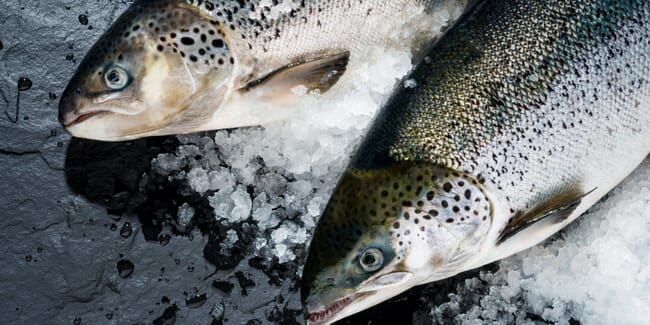
RAS have been developed to allow land-based fish farms to continually reuse their water with only small volumes of makeup water required. However, where RAS is used for grow-out systems, one of the main challenges still to overcome is the presence of compounds – such as geosmin – that cause fish to taste muddy. Their presence traditionally results in the need for expensive purging, increasing the environmental footprint of an RAS.
Established in 2013, making it one of the pioneering RAS grow-out facilities, Kuterra has historically managed off-flavour compound (OFC) levels by varying the levels of makeup water in the system.
However, after reading about promising small scale trial work on OFC reduction conducted at the Aquaculture Centre of Excellence, Lethbridge College using ACF-RAS Right bacteria products, Kuterra contacted Nova Q and agreed to a full-scale trial at their facility.
RAS Right is an established brand of bacteria products developed by Nova Q and BluePlanet Labs for RAS facilities.
For OFC removal, Nova Q multiplied the RAS Right bacteria species continuously on-site in a bioreactor grow-tank and dosed into the RAS biofilter at regular intervals.
This ensures that not only are the OFCs targeted, but also that the essential populations of nitrifying bacteria are maintained in adequate numbers to ensure water quality parameters are always met. According to Nova Q, the RAS Right bacteria species break down OFCs directly and crowd out the harmful bacteria that produce the OFCs.
Within a month, geosmin levels started a sustained fall and after 115 days stabilised below the 5ng/L (5 parts per trillion) industry-standard limit for acceptable flavour. This reduction was achieved while reducing MUW requirements to a quarter of their initial levels, alongside a downward trend in turbidity levels. Strong nitrification – the core function of the biofilter bacteria – was maintained throughout.
“We’re now getting geosmin levels consistently below our maximum limit, coupled with only requiring design rates of makeup water – which is unprecedented in our site,” said John Burton, Kuterra’s production manager, in a press release.
“Kuterra has been an ideal site on which to prove out our geosmin solution at a larger scale. The team there are among the most experienced in the grow-out industry, both in how they monitor and in willingness to try new approaches in their RAS. These ground-breaking results show how OFC issues can be solved by active microbiome management,” added Julian Beatty, MD of Nova Q.




